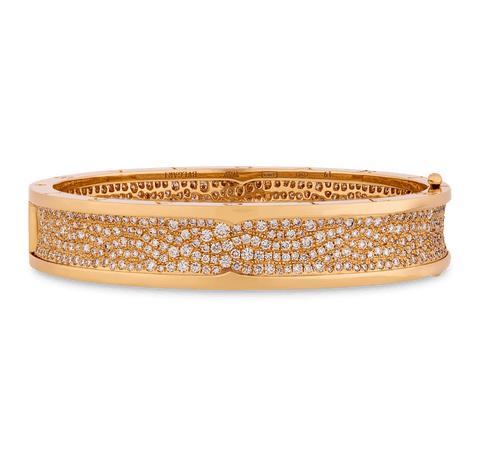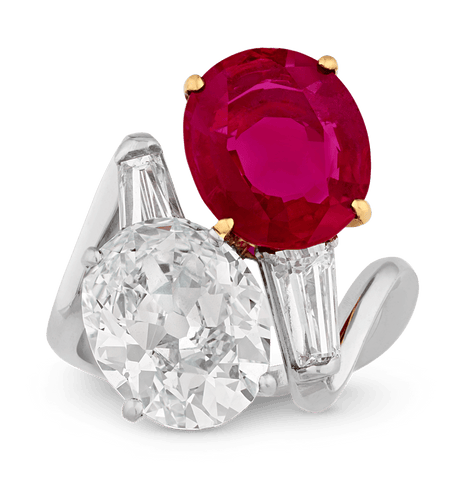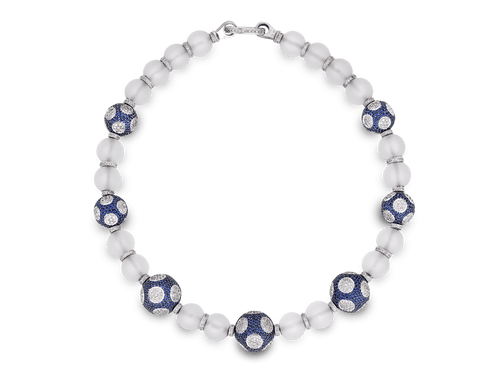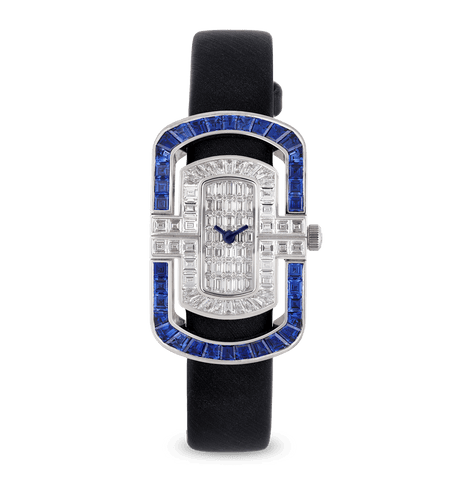Artists & Artisans
Bulgari
Bulgari is an Italian luxury fashion house, synonymous with the highest quality jewelry and a favorite of many iconic celebrities, including Elizabeth Taylor. From humble beginnings in Rome at the end of the 19th century, Bulgari has become one of the most respected and coveted brands in contemporary fashion and jewelry.
1884-1940
Bulgari began as a single shop in Rome, founded by Greek silversmith Sotirios Bulgari in 1884. Dangerous wars had forced Sotirios and his father to flee from their home and eventually settle in Rome in 1881. The father-son team prevailed despite challenges and established themselves as prominent silversmiths in the international metropolis. Initially, the shop’s primary customers were English tourists participating in the Grand Tour, who treasured Bulgari’s expertly crafted silver luxury ornaments with designs that combined Byzantine and Islamic art influences with floral motifs.
When Sotirios died in 1932, two of his sons, Costantino and Giorgio, expanded the brand beyond silver and into high jewelry, taking a particular interest in precious gemstones. They initially experimented with various styles before finding their signature, distinctive point of view around the mid-20th century. Drawing inspiration from the grandeur of Roman architecture, mosaics and stone sculptures, Bulgari designs began to exude a distinctly Italian flair that continues to define the brand today.
In the 1930s, Bulgari debuted one of their most popular and enduring designs, the Trombino ring. This unique ring setting includes pavé diamonds surrounding the center stone, further accented by a row of baguette diamonds. Their timeless Serpenti bracelet watches emerged at the end of the 1940s, and this recognizable motif continues to be one of Bulgari’s most iconic jewelry lines.
Post WWII
Following WWII, a worldwide fascination with the Eternal City characterized Rome’s “Dolce Vita” era and inspired American Hollywood movies. Bulgari’s top clients became leading ladies such as Elizabeth Taylor and Ingrid Bergman, and their jewels were showcased both on and off the screen by these fabulous celebrities and society ladies. Filming Cleopatra sparked Elizabeth Taylor’s love for Bulgari, and she eventually started collecting unique pieces for her own famed jewelry collection.
In the 1950s, Bulgari cemented its role as one of the preeminent Italian designers who took inspiration directly from Roman architecture and culture. The high jewelry brand embraced cabochon gems to mimic the city’s awe-inspiring cupolas, and their signature geometric forms were often references to other magnificent architectural forms. Bulgari’s luxury creations from this era established the brand's opulent Roman style and caught global attention.
In the 1970s, the brand expanded beyond Rome and accordingly showcased cultures of the globe in their designs. This decade saw Bulgari enter the world of horlogerie, debuting their first watches in 1977. The 1980s and 90s were characterized by the brand’s embrace of modular jewelry, in which one strong motif is replicated with a variety of materials. Bulgari also began creating ready-to-wear pieces that could be worn comfortably all day, introducing the use of unconventional materials such as steel, wood and silk to create innovative, yet still beautifully luxurious, pieces.
Legacy
Expanding into the realms of fragrance, accessories and leather goods, Bulgari has continued to evolve as a brand throughout the 21st century. Above all, Bulgari’s jewelry remains its signature creation, revered for its exceptional quality and innovative designs that have shaped the history of jewelry since its inception over 130 years ago.
Artists & Artisans
Bulgari
Bulgari is an Italian luxury fashion house, synonymous with the highest quality jewelry and a favorite of many iconic celebrities, including Elizabeth Taylor. From humble beginnings in Rome at the end of the 19th century, Bulgari has become one of the most respected and coveted brands in contemporary fashion and jewelry.
1884-1940
Bulgari began as a single shop in Rome, founded by Greek silversmith Sotirios Bulgari in 1884. Dangerous wars had forced Sotirios and his father to flee from their home and eventually settle in Rome in 1881. The father-son team prevailed despite challenges and established themselves as prominent silversmiths in the international metropolis. Initially, the shop’s primary customers were English tourists participating in the Grand Tour, who treasured Bulgari’s expertly crafted silver luxury ornaments with designs that combined Byzantine and Islamic art influences with floral motifs.
When Sotirios died in 1932, two of his sons, Costantino and Giorgio, expanded the brand beyond silver and into high jewelry, taking a particular interest in precious gemstones. They initially experimented with various styles before finding their signature, distinctive point of view around the mid-20th century. Drawing inspiration from the grandeur of Roman architecture, mosaics and stone sculptures, Bulgari designs began to exude a distinctly Italian flair that continues to define the brand today.
In the 1930s, Bulgari debuted one of their most popular and enduring designs, the Trombino ring. This unique ring setting includes pavé diamonds surrounding the center stone, further accented by a row of baguette diamonds. Their timeless Serpenti bracelet watches emerged at the end of the 1940s, and this recognizable motif continues to be one of Bulgari’s most iconic jewelry lines.
Post WWII
Following WWII, a worldwide fascination with the Eternal City characterized Rome’s “Dolce Vita” era and inspired American Hollywood movies. Bulgari’s top clients became leading ladies such as Elizabeth Taylor and Ingrid Bergman, and their jewels were showcased both on and off the screen by these fabulous celebrities and society ladies. Filming Cleopatra sparked Elizabeth Taylor’s love for Bulgari, and she eventually started collecting unique pieces for her own famed jewelry collection.
In the 1950s, Bulgari cemented its role as one of the preeminent Italian designers who took inspiration directly from Roman architecture and culture. The high jewelry brand embraced cabochon gems to mimic the city’s awe-inspiring cupolas, and their signature geometric forms were often references to other magnificent architectural forms. Bulgari’s luxury creations from this era established the brand's opulent Roman style and caught global attention.
In the 1970s, the brand expanded beyond Rome and accordingly showcased cultures of the globe in their designs. This decade saw Bulgari enter the world of horlogerie, debuting their first watches in 1977. The 1980s and 90s were characterized by the brand’s embrace of modular jewelry, in which one strong motif is replicated with a variety of materials. Bulgari also began creating ready-to-wear pieces that could be worn comfortably all day, introducing the use of unconventional materials such as steel, wood and silk to create innovative, yet still beautifully luxurious, pieces.
Legacy
Expanding into the realms of fragrance, accessories and leather goods, Bulgari has continued to evolve as a brand throughout the 21st century. Above all, Bulgari’s jewelry remains its signature creation, revered for its exceptional quality and innovative designs that have shaped the history of jewelry since its inception over 130 years ago.








